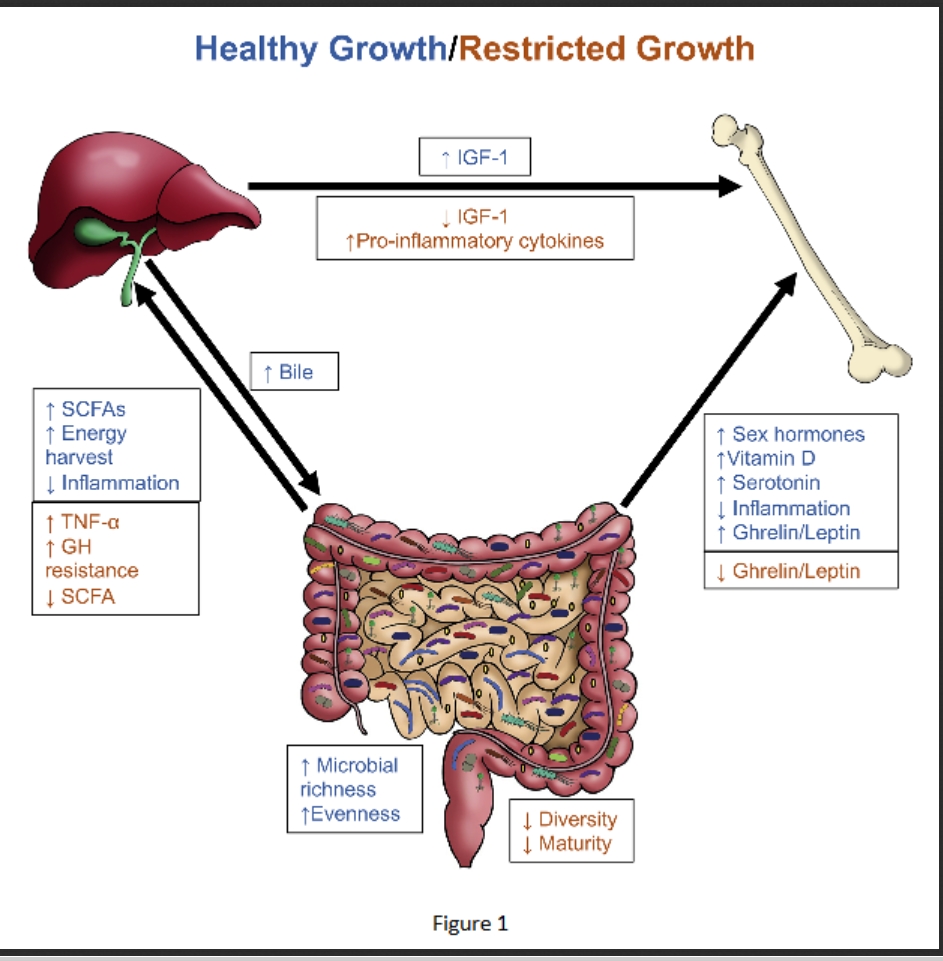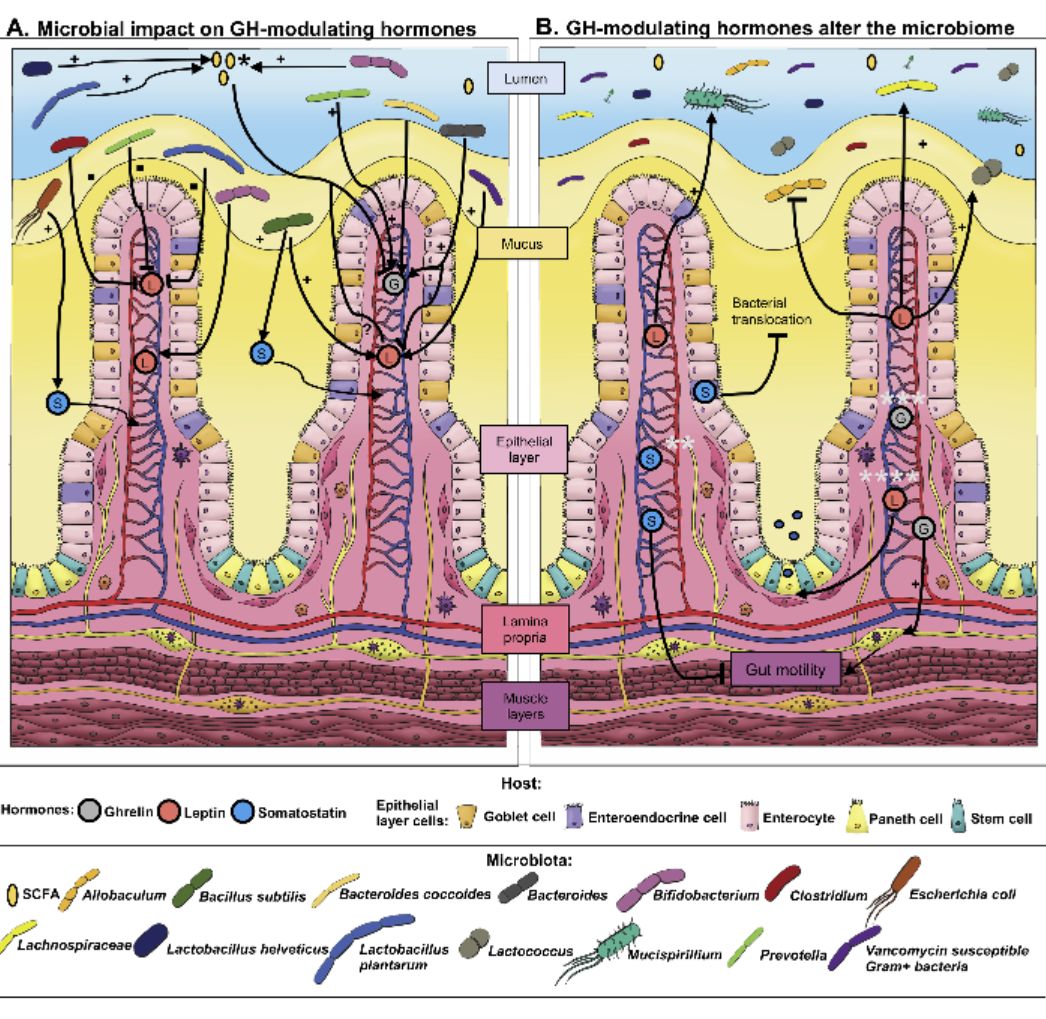Crosstalk between the growth hormone/insulin-like growth factor-1 axis and the gut microbiome: A new frontier for microbial endocrinology
Elizabeth A.Jensen Growth Hormone & IGF Research Volumes 53–54, August–October 2020, 101333
Highlights
• Both the GH/IGF-axis and gut microbes are important for host growth and metabolism.
• Gut microbes impact growth partially through altering the GH/IGF-1 axis.
• IGF-1 normalizes the diversity of the microbial community in the gut.
• GH may alter microbes, microbial maturation, and short chain fatty acid production.
Abstract
Both the GH/IGF-1 axis and the gut microbiota independently play an important role in host growth, metabolism, and intestinal homeostasis. Inversely, abnormalities in GH action and microbial dysbiosis (or a lack of diversity) in the gut have been implicated in restricted growth, metabolic disorders (such as chronic undernutrition, anorexia nervosa, obesity, and diabetes), and intestinal dysfunction (such as pediatric Crohn's disease, colonic polyps, and colon cancer).
Over the last decade, studies have demonstrated that the microbial impact on growth may be mediated through the GH/IGF-1 axis, pointing toward a potential relationship between GH and the gut microbiota. This review covers current research on the GH/IGF-1 axis and the gut microbiome and its influence on overall host growth, metabolism, and intestinal health, proposing a bidirectional relationship between GH and the gut microbiome.















